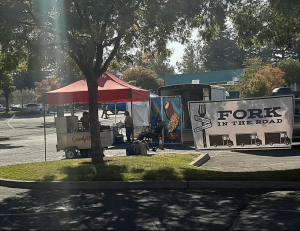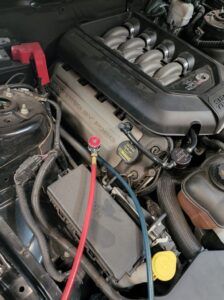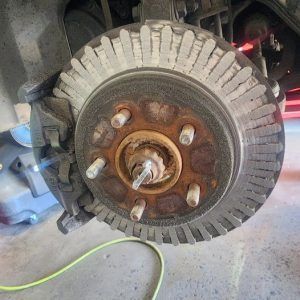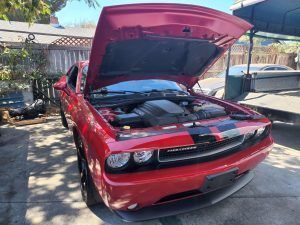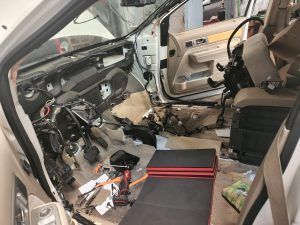Understanding the Common Issues Needing Automotive Repair
Automobiles are complex machines composed of thousands of interconnected parts, and over time, various components can wear out, fail, or require maintenance. This is where auto repairs come in. While modern cars are more reliable than ever due to advancements in engineering and technology, no vehicle is immune to mechanical issues. Understanding common automotive problems can help drivers recognize warning signs early, seek timely repairs, and prevent minor issues from escalating into major (and costly) repairs.
This comprehensive guide explores the most common automotive issues, their causes, symptoms, and potential solutions. By understanding these problems, vehicle owners can ensure their cars remain safe, reliable, and roadworthy.
1. Engine-Related Issues
A. Engine Misfires
An engine misfire occurs when one or more cylinders fail to ignite properly, resulting in rough idling, reduced power, and poor fuel economy. Misfires can be caused by several factors, including:
- Faulty spark plugs: Worn or damaged spark plugs can fail to ignite the air-fuel mixture in the cylinder.
- Ignition coil problems: A malfunctioning ignition coil may fail to generate the necessary spark.
- Clogged fuel injectors: Dirty or clogged fuel injectors can disrupt the flow of fuel, leading to incomplete combustion.
- Vacuum leaks: Air leaks in the intake manifold or vacuum hoses can create an improper air-fuel mixture.
Symptoms:
- Rough idling or stalling.
- Decreased acceleration and power.
- Check Engine Light (CEL) illumination.
- Increased fuel consumption.
Solution: Diagnosing the root cause of the misfire is essential. Technicians may inspect spark plugs, ignition coils, and fuel injectors and perform a diagnostic scan to identify error codes. Replacing worn parts and cleaning the fuel system can resolve most misfires.
B. Overheating Engine
An overheating engine can lead to severe damage, including warped cylinder heads, blown head gaskets, and engine failure. Common causes of overheating include:
- Low coolant levels: A leak in the radiator, hoses, or water pump can lead to insufficient coolant.
- Faulty thermostat: If the thermostat fails to open, coolant circulation is restricted, causing the engine to overheat.
- Clogged radiator: Debris or corrosion inside the radiator can block the flow of coolant.
- Malfunctioning water pump: A failing water pump can’t circulate coolant effectively, leading to overheating.
Symptoms:
- Rising temperature gauge.
- Steam from under the hood.
- Coolant leaks (puddles under the vehicle).
- Reduced engine performance.
Solution: Overheating issues require immediate attention. A technician will inspect the cooling system for leaks, test the thermostat and water pump, and flush the radiator if necessary. Replacing faulty components and refilling the coolant will prevent further damage.
C. Oil Leaks and Low Oil Pressure
Oil is essential for lubricating engine components and reducing friction. Oil leaks and low oil pressure can lead to engine wear and catastrophic failure if left unaddressed. Common causes include:
- Worn gaskets and seals: Over time, engine gaskets, valve covers, and oil pan seals can degrade, leading to leaks.
- Damaged oil filter: A loose or damaged oil filter can cause oil to leak.
- Faulty oil pump: A failing oil pump reduces oil circulation, leading to low pressure.
- Clogged oil passages: Sludge buildup can block oil passages, reducing pressure.
Symptoms:
- Oil spots under the vehicle.
- Burning oil smell.
- Warning light for low oil pressure.
- Engine knocking or ticking noises.
Solution: Identifying the source of the leak or pressure issue is crucial. This may involve replacing gaskets, seals, or the oil filter. Regular oil changes and using the correct oil type can prevent future issues.
2. Transmission Problems
A. Slipping Transmission
Transmission slipping occurs when the vehicle fails to stay in the selected gear, causing erratic shifting and loss of power. Common causes include:
- Low transmission fluid: Inadequate fluid levels reduce hydraulic pressure, leading to slipping.
- Worn clutch (manual transmissions): A worn clutch disc may struggle to engage the gears.
- Damaged torque converter: A failing torque converter can affect automatic transmission performance.
- Faulty solenoids: Transmission solenoids control fluid flow, and a malfunction can disrupt gear changes.
Symptoms:
- Delayed or erratic shifting.
- Loss of power during acceleration.
- Grinding or whining noises.
- Transmission warning light activation.
Solution: A transmission fluid check is the first step in diagnosing slipping. Refilling or flushing the fluid and replacing worn components like clutches, solenoids, or the torque converter may be necessary. Regular transmission maintenance can prevent many issues.
B. Transmission Fluid Leaks
Leaking transmission fluid can lead to poor shifting performance and overheating. Common causes include:
- Damaged seals or gaskets: Worn seals in the transmission pan, input shaft, or output shaft can leak fluid.
- Cracked transmission housing: Physical damage to the housing can cause fluid leaks.
- Loose or damaged transmission pan: Improperly secured pans can leak.
Symptoms:
- Red or brown fluid under the vehicle.
- Burning smell.
- Difficulty shifting gears.
- Warning lights on the dashboard.
Solution: Addressing transmission leaks involves identifying the source of the leak and replacing faulty seals, gaskets, or the transmission pan. Regularly checking fluid levels can prevent major issues.
3. Brake System Issues
A. Worn Brake Pads and Rotors
Brake pads and rotors wear down over time due to friction, reducing stopping power and compromising safety. Causes of accelerated wear include:
- Frequent hard braking.
- Driving in mountainous or hilly areas.
- Poor-quality brake components.
Symptoms:
- Squeaking, grinding, or squealing noises when braking.
- Increased stopping distance.
- Vibrations or pulsations in the brake pedal.
- Brake warning light activation.
Solution: Replacing worn brake pads and resurfacing or replacing rotors will restore braking performance. Regular brake inspections can prevent unexpected failures.
B. Brake Fluid Leaks
Brake fluid is essential for creating hydraulic pressure. Leaks can lead to brake failure and a spongy brake pedal. Common causes include:
- Damaged brake lines.
- Worn master cylinder seals.
- Leaking calipers or wheel cylinders.
Symptoms:
- Brake pedal feels soft or spongy.
- Fluid pooling near the wheels.
- Reduced braking power.
Solution: Fixing brake fluid leaks involves repairing or replacing damaged components and bleeding the brake system to remove air bubbles.
4. Electrical System Problems
A. Dead Battery
A dead battery is one of the most common automotive issues. Causes include:
- Old or worn-out battery: Batteries lose their capacity over time.
- Parasitic drain: Electrical components continue to draw power when the car is off.
- Faulty alternator: An alternator that fails to charge the battery properly.
Symptoms:
- Clicking sound when turning the key.
- Dim headlights.
- Dashboard warning lights.
Solution: Jump-starting the vehicle or replacing the battery resolves the issue. Ensuring the alternator and electrical connections are in good condition is essential.
B. Faulty Alternator
The alternator charges the battery and powers electrical systems. A failing alternator can lead to a drained battery and malfunctioning electronics. Causes include:
- Worn bearings or brushes.
- Damaged voltage regulator.
- Loose or frayed wiring.
Symptoms:
- Battery warning light.
- Dimming or flickering headlights.
- Loss of power to electrical components.
Solution: Replacing the alternator or repairing the faulty components will restore proper electrical function.
5. Suspension and Steering Issues
A. Worn Shock Absorbers and Struts
Shock absorbers and struts dampen road impacts, providing a smooth ride. Over time, they wear out, leading to poor handling and comfort issues.
Symptoms:
- Bumpy or unstable ride.
- Nose-diving when braking.
- Uneven tire wear.
Solution: Replacing worn shocks and struts improves ride quality and handling.
B. Steering System Problems
Steering issues can result from worn components or hydraulic fluid leaks. Common causes include:
- Damaged power steering pump.
- Leaking power steering fluid.
- Worn tie rods or ball joints.
Symptoms:
- Difficulty steering.
- Whining noise when turning.
- Steering wheel vibration.
Solution: Replacing damaged components and refilling steering fluid ensures proper steering function.
6. Exhaust System Issues
A. Exhaust Leaks
Exhaust leaks can cause increased noise and emissions, reducing engine performance. Common causes include:
- Corroded exhaust pipes.
- Damaged gaskets or clamps.
Symptoms:
- Loud exhaust noise.
- Decreased fuel efficiency.
- Smell of exhaust inside the cabin.
Solution: Repairing or replacing the damaged sections of the exhaust system will resolve leaks.
B. Catalytic Converter Failure
The catalytic converter reduces harmful emissions. Failure can result from:
- Clogging due to carbon buildup.
- Contamination from unburned fuel.
Symptoms:
- Reduced acceleration.
- Rotten egg smell.
- Check Engine Light.
Solution: Replacing the catalytic converter restores emissions compliance and performance.
Conclusion
Understanding common automotive repair issues helps vehicle owners recognize problems early and seek timely repairs. Regular maintenance, attentive driving, and addressing minor issues promptly can extend a vehicle’s lifespan, improve performance, and reduce repair costs. Working with a trusted auto repair shop ensures that these common issues are diagnosed accurately and resolved effectively, keeping your vehicle safe and reliable for years to come.
